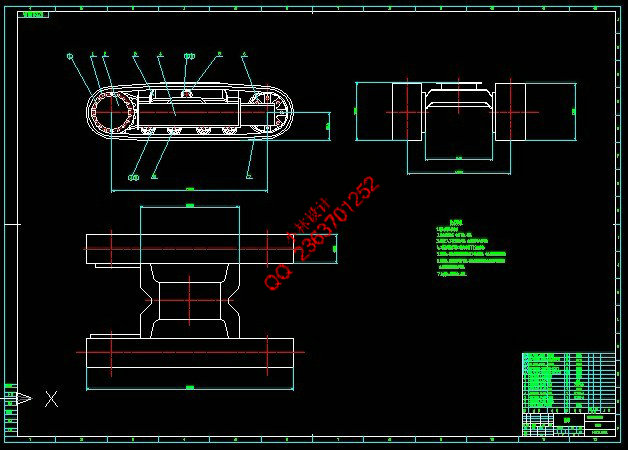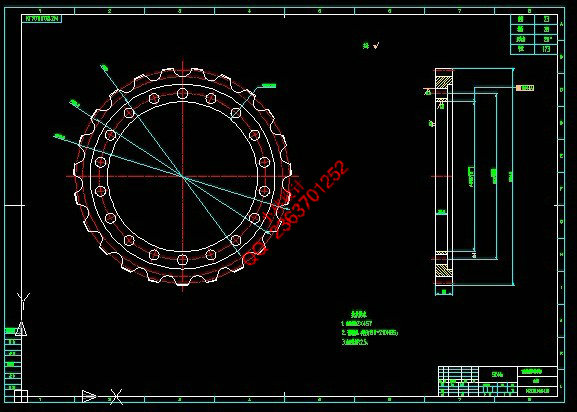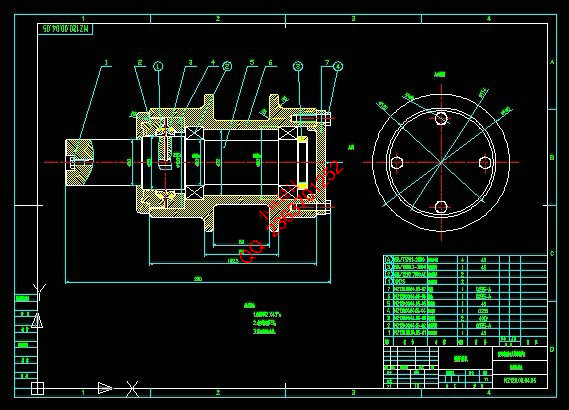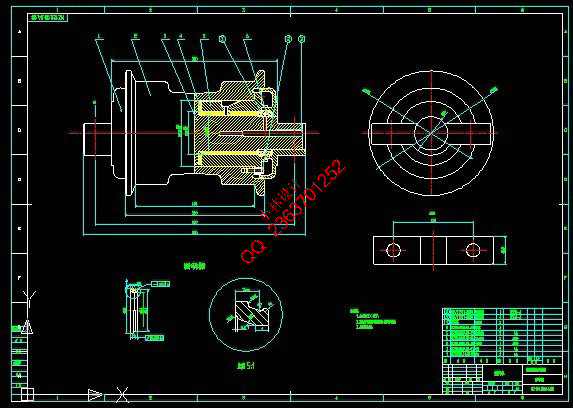|
设计简介 |
文档包括:
word说明书一份,共49页,约20000字
CAD版本图纸,共5张
摘要
履带式底盘的结构特点和性能决定了它在农田耕作业中具有明显的优势,履带式底盘的接地比压相对较低。不会对翻耕过的土壤造成多次反复的碾压,而轮式底盘在整地和耙地作业时轮胎在翻耕过的土壤上反复碾压,造成对土壤的多次压实,不利于播种后种子的生长发育。因此,研究履带底盘的性能具有极其重要的意义。
本毕业设计的课题为履带式液压驱动底盘的设计,设计了一种后轮驱动行走底盘,底盘采用发动机与液压传动系统相结合实现动力匹配,底盘的液压系统实现了一泵驱动两马达差速行走,使其结构紧凑、操作灵活、安全可靠,能适应外负荷的剧烈变化,整机的性能得到了提高,能满足各种工况下的使用要求。在已知功率的情况下,整个设计参考农业机械的基本参数,选取了液压马达、液压泵等液压件。履带的结构同样参考了履带拖拉机的基本参数,设计了履带的结构和尺寸,使整个设计得到了优化。
经过比较试验,本设计得到以下结论:
1.底盘的液压系可实现一泵两马达差速行走,增加了底盘的自适应能力。
2.本设计的底盘的质量为2.1t,与目前大部分底盘相比,达到了轻体的设计要求。
3..液压驱动系统能够实现无级变速,同时能够实现制动和高低速转换,即:工作时低速行驶,转场是高速行驶。灵活方便,易于操纵。
关键词:履带 液压系统 底盘
Abstract
Crawler chassis structure determines its characteristics and performance in the fields farming industry has a clear advantage. Crawler chassis ground pressure is relatively low. Tilling the soil will not cause too many repeated rolling. The wheeled chassis in the preparation and harrow tillage operations tires rolling over the soil again, Soil compaction caused by repeated is not conducive to the growth and development after sowing seeds, Therefore, the study tracked the performance of the chassis is extremely important.
The subject of this graduation project is tracked hydraulically driven chassis .Design a rear wheel drive, the chassis walk chassis engine and hydraulic transmission system to realize dynamic matching .The hydraulic system realizes the chassis a pump driven two motor differential walk, make its compact structure, flexible operation, safe, reliable, and can adapt to the drastic change of load, the machine performance can satisfy the various working conditions of use requirement. In the case of a known power, the design references the basic parameters of agricultural machines, select a hydraulic motor, hydraulic pump, etc. The structure of the reference the same track basic parameters of the crawler tractor, design the structure and size of crawler, make whole design are optimized.
After more testing, this design get the following conclusions:
Chassis system can achieve a hydraulic pump motor differential walking two, to increase the adaptive capacity of the chassis.
The design of the chassis mass of 2.1t, Compared with the current most of the chassis, Reached a lightweight design requirements variable speed hydraulic drive system to achieve, At the same time to achieve high-speed braking and convert, Namely: working at low speed, transitions is high speed. Flexible, easy to manipulate’
Key words :
Crawler Hydraulic system Chassis
目录
1.绪论 1
1.1 国内外锚杆钻机的研制状况 1
1.1.1 国内锚杆钻机的研制状况 1
1.1.2国外锚杆钻机技术发展状况 2
1.1.3发展趋势 3
1.1.4国内履带式液压驱动底盘的发展趋势 4
1.2本次设计的意义、目的 5
1.2.1 本次设计的技术难点及分析 5
1.3 完成设计课题采用的方法 6
2.各部分方案的选择 7
2.1行走系统(底盘)的设计与选型 7
2.2 润滑系统的设计 8
3 整机参数的计算 9
3.1 功率计算 9
3.1.1工作机构进给力的计算 9
3.1.2回转扭矩的计算 9
3.1.3整机功率的计算 10
3.2 柴油机的选择 11
3.3主要外形参数的计算 12
3.3.1主要参数的计算 12
3.3.2功率参数: 14
3.3.3各项技术参数 14
4. 履带底盘的设计 16
4.1 履带行走系统的设计 16
4.1.1 履带宽度和支撑面长度选择 16
4.1.2 履带节距的计算 17
4.1.3 履带板结构的选择 17
4.2 驱动轮的设计 19
4.2.1 驱动轮主参数的确定 20
4.2.2 驱动轮的强度校核 21
4.3 支重轮的设计 22
4.3.1 选择支重轮的尺寸 23
4.3.2 支重轮的强度校核 24
4.3.3 支重轮轴的校核 24
4.3.4.支重轮滑动轴承验算 25
4.4 拖链轮的设计 26
4.5 导向轮的设计 27
4.5.1 导向轮的参数选择 27
4.5.2导向轮轴的校核 28
4.6 导向轮张紧装置的设计 29
4.6.1 弹簧参数的的确定 29
4.6.2 圆柱螺旋压缩弹簧的设计 30
4.7行走机构、行走架的设计 32
4.7.1 行走机构的设计 32
4.7.2下车架的设计 32
4.7.3 底架的设计及校核 33
4.7.4 横梁的设计及校核 34
5.使用和维护说明 36
5.1 操作环境及使用条件 36
5.1.1 本机的工作环境 36
5.1.2 使用条件 36
5.2 整机技术条件 36
5.2.1 关于技术条件的说明 36
5.2.2 技术条件 37
5.2.3 标志及包装 39
6. 结语和展望 40
6.1 结论 40
6.2 本课题展望 40
参考文献 42
附录 43
致 谢 44
|










